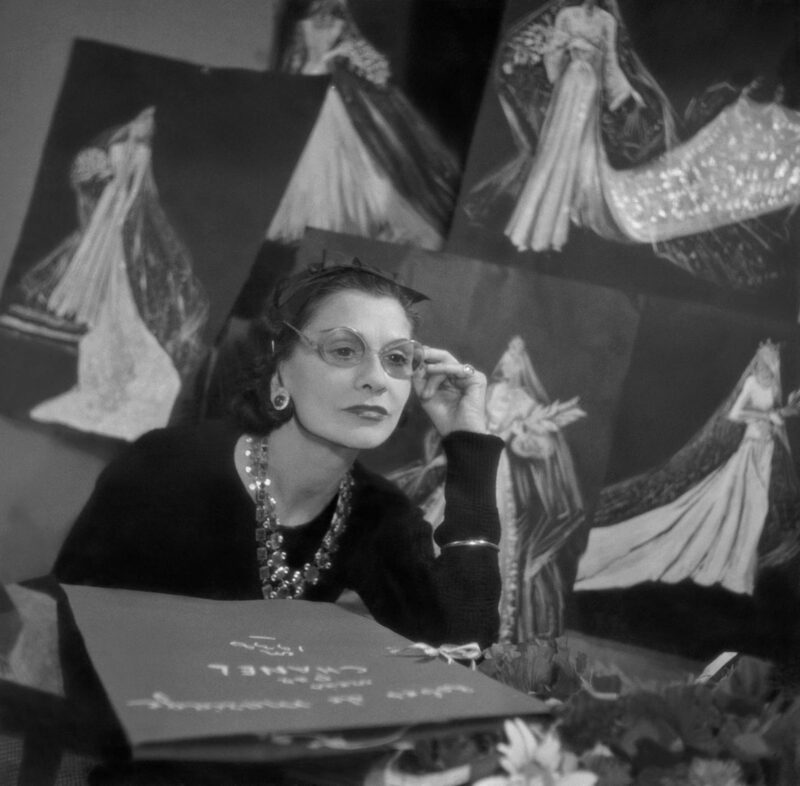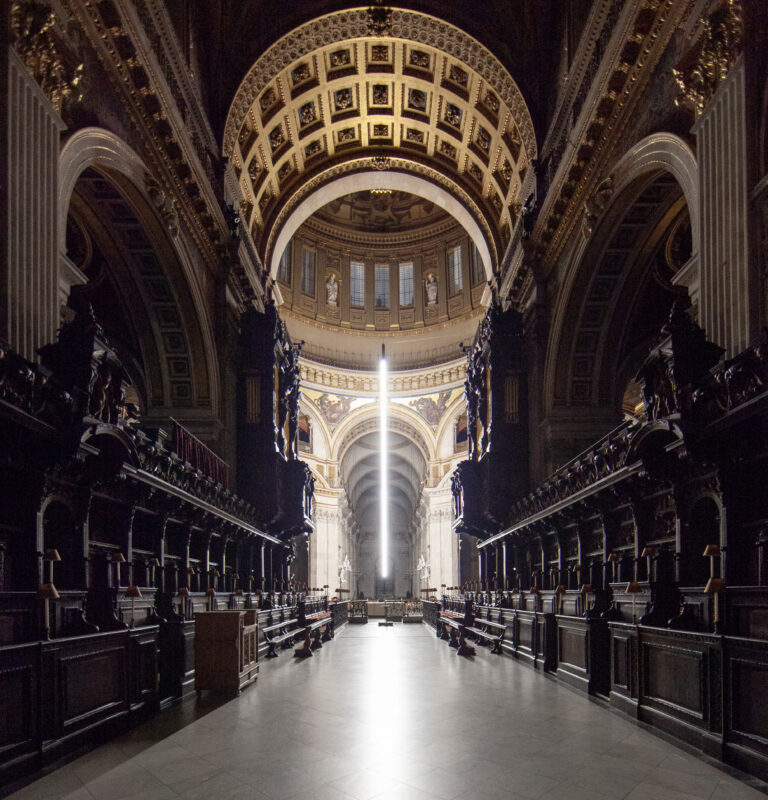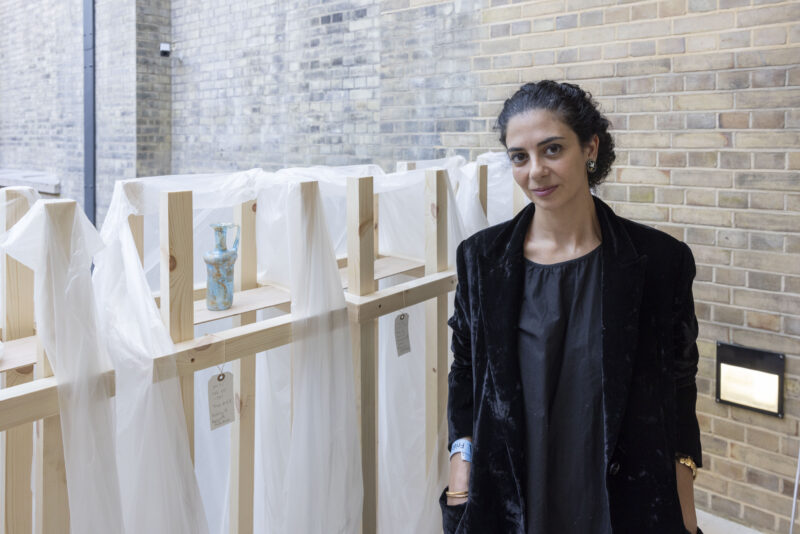New highlights of Fabergé in London: Romance to Revolution have been announced today. The recently rediscovered Third Imperial Egg of 1887, found by a scrap dealer in 2011 – one of the ‘missing’ eggs created by Fabergé that was lost for many years. It appeared at an auction in New York in 1964, but was unrecognised and then disappeared until 2011, when it was bought for its gold weight value at a Midwest flea market. The buyer later contacted the antique jewellery firm Wartski who identified it as being an Imperial easter egg. The jewelled and ridged yellow-gold Egg, on a tripod pedestal, stands on chased lion paw feet and is encircled by coloured gold garlands suspended from blue cabochon sapphires, topped with rose diamond-set bows. In the traditional Fabergé style, the egg contains a surprise – a lady’s watch by Vacheron Constantin, with a white enamel dial and openwork diamond-set gold hands. The egg was first given by Emperor Alexander III to Empress Marie Feodorovna for Easter in 1887.
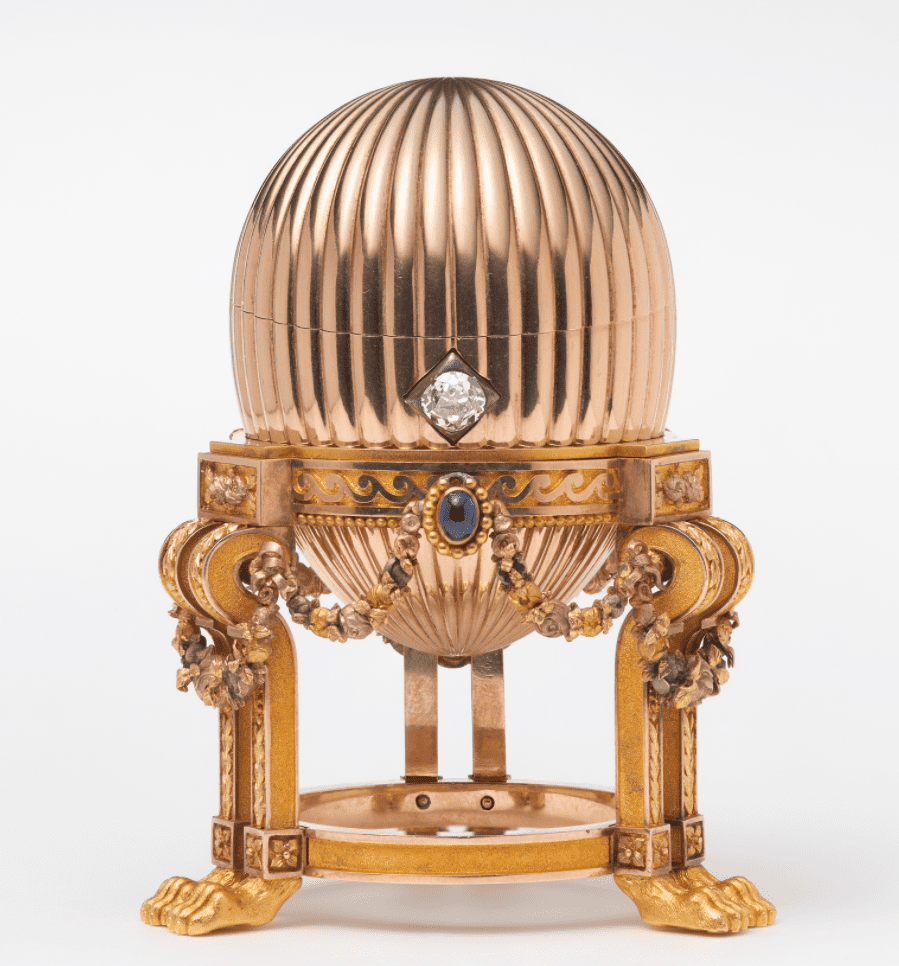
Two rare human sculptures that only after the Imperial easter eggs are considered the most coveted of his creations with less than 50 ever recorded; a pair of figurine portraits of the private bodyguards of the Dowager Empress and the Tsarina, commissioned by Emperor Nicholas II in 1912, reunited for the first time in over 100 years since they were confiscated following the Russian Revolution in 1917, along with nearly all of the imperial family’s personal possessions. One of the figures remained in Pavlovsk Palace south of St Petersburg while his brother-in-arms was bought by a wealthy Fabergé collector in New York City, discovered in the family attic during a house clearance and later sold at auction in 2013.
Opening this November, the V&A announces Fabergé in London: Romance to Revolution, the first major exhibition devoted to the international prominence of the legendary Russian goldsmith and the importance of his little-known London branch. With a focus on Fabergé’s Edwardian high society clientele, the exhibition will shine a light on his triumphs in Britain as well as a global fascination with the joyful opulence of his creations. Three of his legendary Imperial Easter Eggs will go on display for the first time in the UK as part of the exhibition’s dramatic finalé.
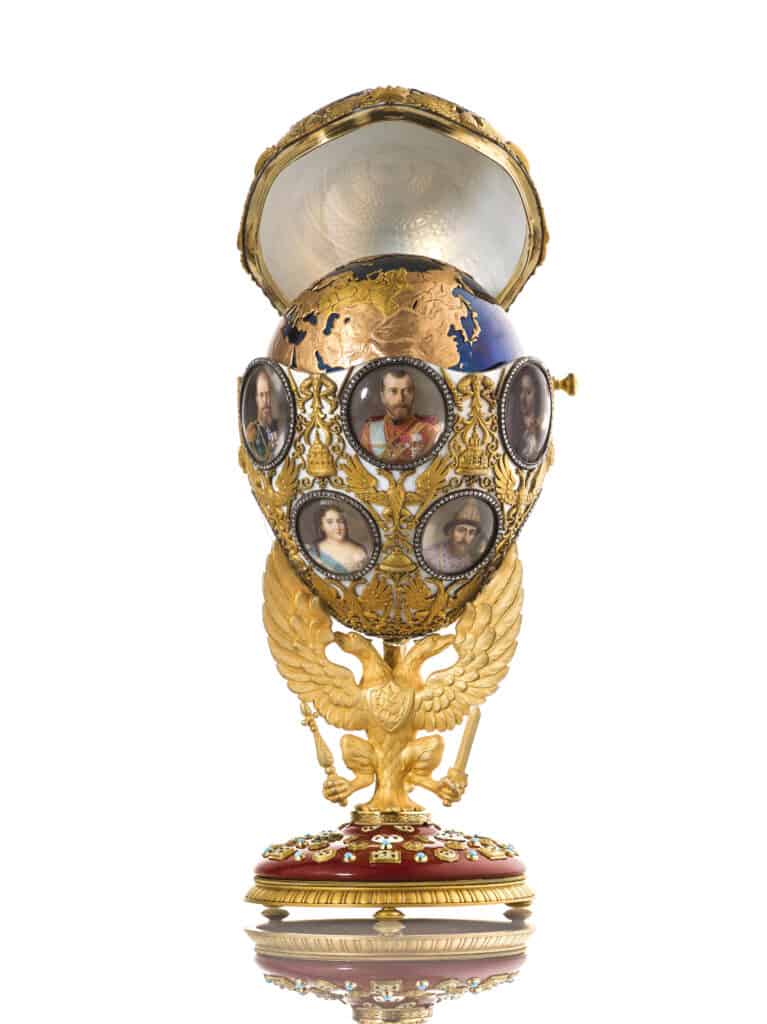
Showcasing almost 200 objects across three main sections, the exhibition will tell the story of Carl Fabergé, the man, and his internationally recognised firm that symbolised Russian craftsmanship and elegance – an association further strengthened by its connection to the romance, glamour and tragedy of the Russian Imperial family.
“The story of Carl Fabergé, the legendary Russian Imperial goldsmith, is one of supreme luxury and unsurpassed craftsmanship. Celebrating Fabergé’s extraordinary achievements, this exhibition focuses on the over-looked importance of his London branch, the only one outside of Russia. It attracted a global clientele of Royalty, aristocrats, business titans and socialites. Through Fabergé’s creations the exhibition will explore timeless stories of love, friendship and unashamed social climbing. It will take the visitor on a journey of sublime artistry and patronage towards the revolution that tragically closed Fabergé – but will send visitors away on a high, by honouring Fabergé’s greatest legacy, with a dazzling final display of his iconic Easter Eggs.”
Kieran McCarthy and Hanne Faurby, Curators of Fabergé in London: Romance to Revolution.
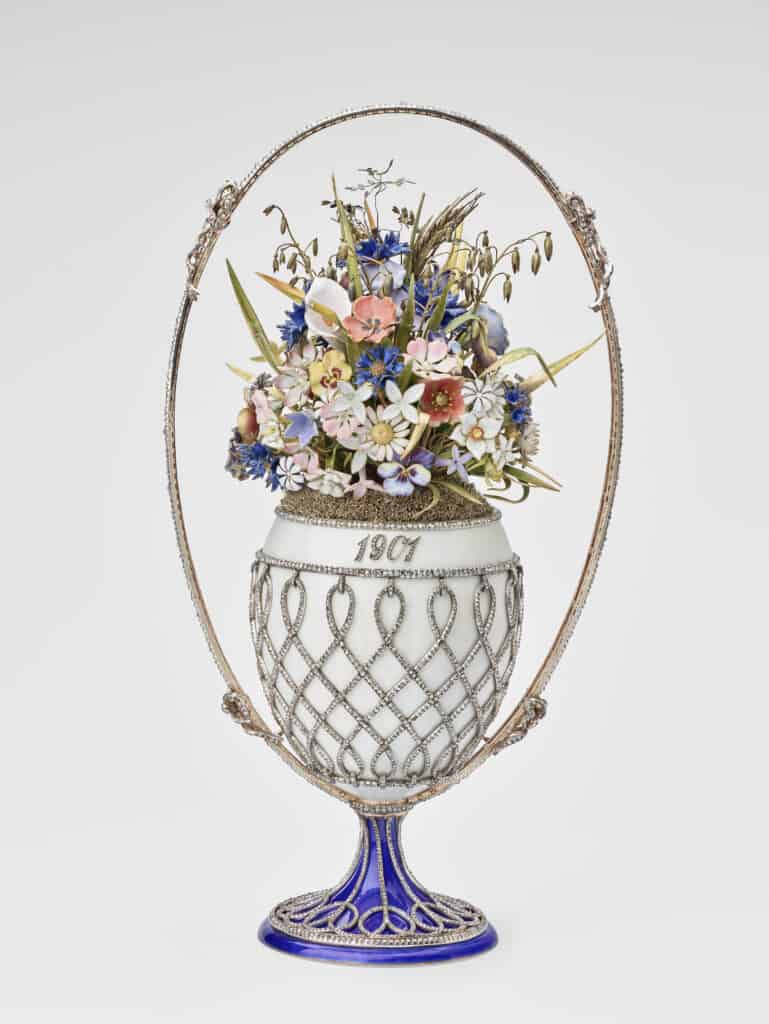
diamonds, 1901. Royal Collection Trust © Her Majesty Queen
Elizabeth II 2021
Unknown to many, the exhibition will explore the Anglo-Russian nature of his enterprise with his only branch outside of Russia opening in London in 1903. Royalty, aristocrats, American heiresses, exiled Russian Grand Dukes, Maharajas, financiers with newly-made fortunes, and socialites flocked there to buy gifts of unparalleled luxury for each other. Fabergé works were as popular in Britain as they were in Russia.
The huge success at the 1900 Paris Exposition made it clear that Fabergé would have a keen customer base outside Russia, should he expand. Fabergé’s choice of London for its new premises was partly because it was the financial capital of the world, a luxury retail destination able to draw a wealthy and international clientele. It was also the home of Edward VII and Queen Alexandra who were already avid Fabergé collectors, making royal patronage in London highly likely. A transitional section in the exhibition will transport visitors from Russia to a bustling London and highlight the strong Royal Family links between the British and Russian families. Royal photography in Fabergé frames, and gifts presented by Emperor Nicholas II and Empress Alexandra Feodorovna to their British relatives will be shown, including a notebook given by Tsar and Tsarina to Queen Victoria for Christmas in 1896.
Fabergé carefully tailored his works to his British clientele. He created hardstone portraits of the farm animals King Edward and Queen Alexandra bred at Sandringham, their favourite country estate, and objects enamelled in the King’s horse racing colour. Highlight objects include a commission from The King of his faithful wire-haired fox terrier Caesar, a silver model portrait of Persimmon, his most loved and successful racehorse, and one of the firm’s rarest creations – a figurine of a veteran English soldier.
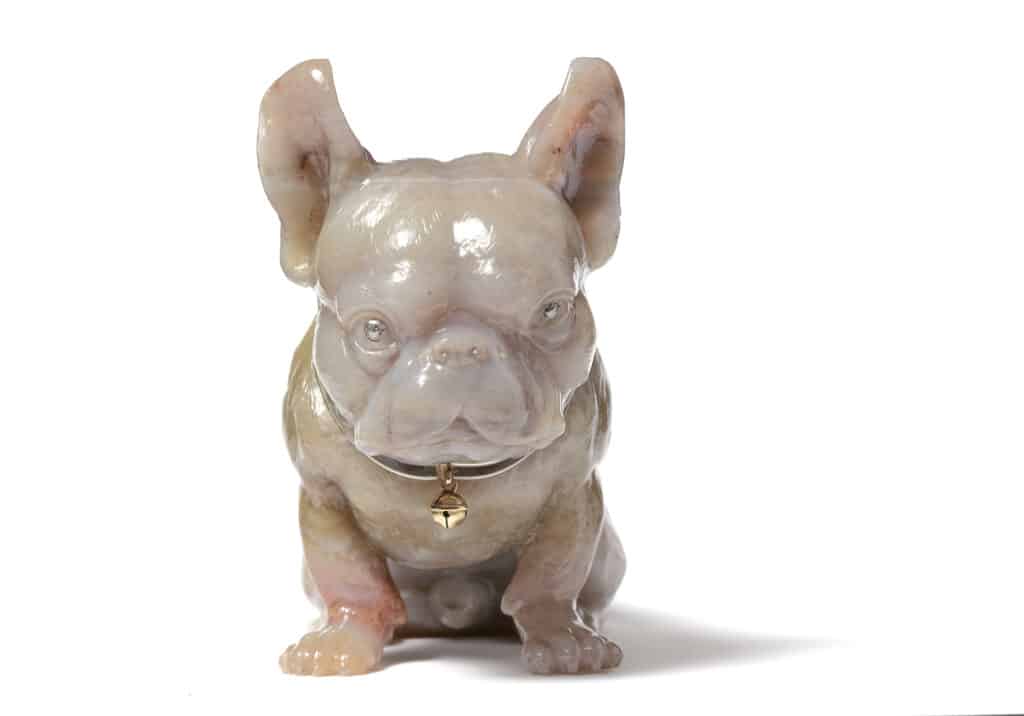
Fabergé became the most exclusive and fashionable place to buy gifts. The King’s mistress, Mrs George Keppel, gifted The King an elegant art-nouveau cigarette case with a snake laid in diamonds biting its tail – a symbol of unbroken and everlasting love. Snuffboxes decorated with topographical views, buildings and monuments were also popular. A nephrite cigar box, set with a sepia enamelled view of the Houses of Parliament, was bought by Grand Duke Michael of Russia on 5 November 1908, the day of Guy Fawkes, and given to King Edward VII. Other highlights include a sumptuous rock crystal vase that was presented to King George V and Queen Mary on the day of their coronation.
The end of the exhibition’s second part moves towards the fateful impact of the Great War and Russian Revolution on Fabergé. With Russia’s entry into the war in 1914, Fabergé’s production suddenly shifted. The workshops focused their output on the war effort and went from creating exquisite objects to producing munitions. Their meticulous craftsmanship switched from jewels and precious metals to copper, brass and steel. In 1917, as the Revolution hit Fabergé’s workshops in Russia, its outpost in London ceased to operate.
The final section of the exhibition will celebrate the legacy of Fabergé through the iconic Imperial Easter Eggs with a kaleidoscopic display of these famous treasures.
The collection on display will include several that have never before been shown in the UK including the largest Imperial Egg – the Moscow Kremlin Egg – inspired by the architecture of the Dormition Cathedral, on loan from the Moscow Kremlin Museums. The Alexander Palace Egg, featuring watercolour portraits of the children of Nicholas II and Empress Alexandra – and containing a surprise model of the palace inside – will also take centre stage alongside the Tercentenary Egg, created to celebrate 300 years of the Romanov dynasty, only a few years before the dynasty crumbled. Other eggs that will feature include Empress Alexandra Feodorovna’s Basket of Flowers Egg, lent by Her Majesty The Queen from the Royal Collection.
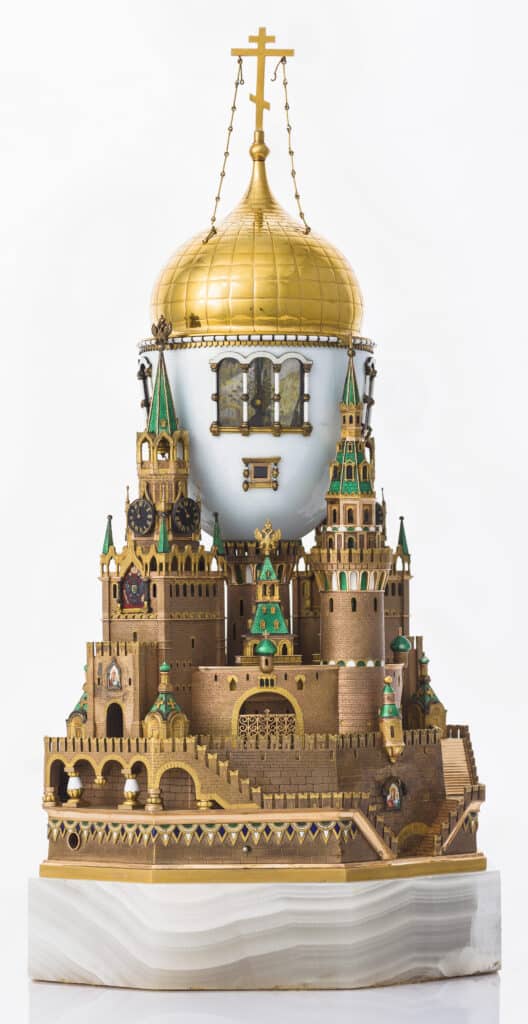
painting, 1906 © The Moscow Kremlin Museums
While the Russian Revolution and the war irrevocably changed the social order in Russia and Europe, the taste for Fabergé survived, especially in London, where the firm’s works continued to be prized. From the 1920s, dealers and auction houses in London acquired confiscated Fabergé objects sold by Soviet Russia. In the 1930s, the art dealers Wartski purchased several Imperial Eggs, which it sold to Fabergé’s London clients and to new generations of collectors in Europe and the United States. Lately, motivated by patriotic repatriation, Russians have become significant collectors of Fabergé’s work.
Although Carl Fabergé’s firm ceased to exist, the myth crystallised around the Imperial Easter Eggs and the demand for Fabergé pieces has endured with his designs continuing to inspire, captivate and delight.
Fabergé in London: Romance to Revolution
Gallery 39 and the North Court, V&A
20 November 2021 – 8 May 2022
Tickets on sale today at vam.ac.uk/exhibitions/faberge

